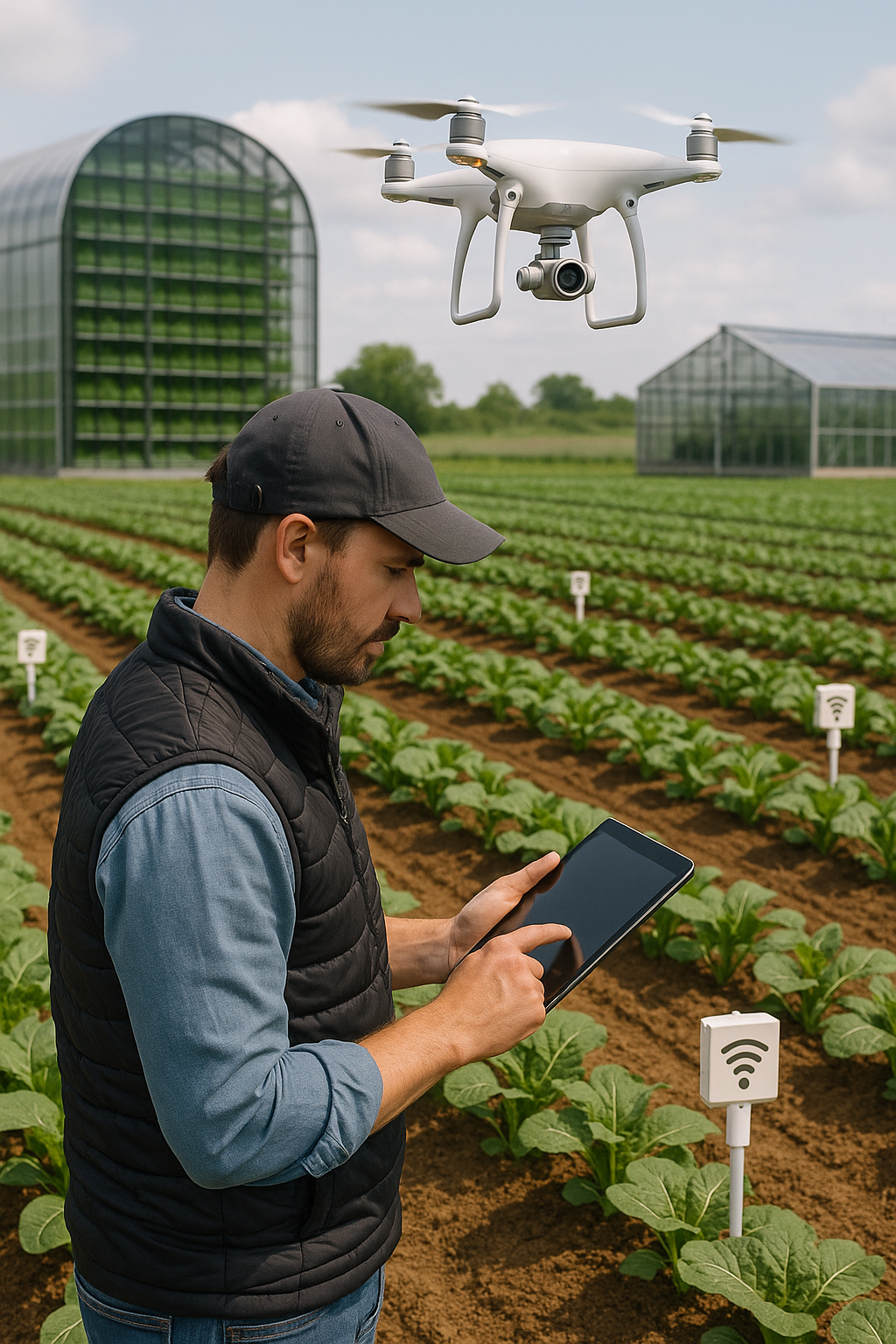Introduction: The Future of Farming is Already Underway
The future of farming is no longer a distant vision—it’s happening now. As climate change, population growth, and resource scarcity challenge traditional agriculture, a new era of innovation is transforming how we grow food. From AI-driven tools to vertical farms, technology and sustainability are converging to define the farms of tomorrow.
In this blog, you’ll discover:
- Why innovation is crucial for the future of farming
- Key challenges accelerating change in agriculture
- Game-changing technologies that are redefining the industry
- What lies ahead for food production and global food security
1. Why the Future of Farming Demands Urgent Innovation
1.1 Climate Change and the Impact on Farming
The future of farming is under direct threat from climate change. Rising global temperatures could reduce crop yields by 10–25% by 2050, especially for staples like wheat and maize .Read More For (IPCC) The Intergovernmental Panel on Climate Change .
Floods, droughts, and heatwaves are now regular occurrences, forcing farmers to rethink how and where food is produced. Resilience is key to safeguarding agriculture in the face of an unpredictable climate.
1.2 Feeding the World: A Future of Farming Under Pressure
By 2050, the world’s population will surpass 9 billion, demanding 60% more food (UN FAO). Meanwhile, farmland is shrinking, and freshwater resources are dwindling.
1.3 Financial Challenges Facing the Future of Farming
Today’s farmers face skyrocketing costs for seeds, fertilizers, fuel, and labor. With many small-scale farmers earning less than $2 a day (World Bank), cost-effective solutions like automation, AI, and digital marketplaces are reshaping agricultural economics.
2. Key Technologies Redefining the Future of Farming
2.1 AI and Machine Learning in the Future of Farming
AI is the brain of the future of farming. Machine learning algorithms now predict optimal planting times, forecast pest outbreaks, and automate harvests.
✅ Example: John Deere’s autonomous tractors and AI-powered field sensors help farmers reduce labor costs while increasing yields.
2.2 Vertical Farming: The Urban Future of Farming
Vertical farming enables crops to grow in stacked indoor layers using 95% less water than traditional methods.
✅ Companies like AeroFarms and Plenty are leading the way in urban agriculture, showing how the farming can thrive in cities with limited land.
2.3 Agricultural Robots and Drones in Smart Farming
Agri-bots are revolutionizing labor-intensive tasks. From robotic strawberry pickers to drone-mounted multispectral sensors, these tools provide 24/7 monitoring and precision.
✅ Drones can identify diseases early with up to 90% accuracy—boosting productivity and minimizing waste.
2.4 Regenerative Practices: Sustainability in the Farming
Sustainable farming isn’t a trend—it’s a necessity. Regenerative techniques like cover cropping, no-till farming, and carbon sequestration are restoring soil health and increasing biodiversity.
✅ Regenerative farms not only produce food but also heal the planet.
3. Barriers Slowing the Future of Farming
3.1 High Entry Costs for Farming Technologies
Precision tools and smart machines come with steep price tags. While large agribusinesses can invest, many smallholders cannot. To ensure an inclusive future of farming, governments must provide financial aid and access to low-cost tech.
3.2 Bridging the Agri-Tech Knowledge Gap
Technological literacy is a major hurdle. Farmers need digital training to effectively adopt and manage modern farming systems.
✅ Agri-tech incubators and local training programs are emerging worldwide to equip farmers .
3.3 Traditional Mindsets and Adoption Resistance
Generational farmers may resist unfamiliar methods. But real-world success stories and peer learning networks are proving that embracing change is essential for long-term viability.
4. What’s Next for the Future of Farming and Food Security
4.1 Lab-Grown Meat and Alternative Proteins
Cell-based meat and plant-derived proteins are disrupting the livestock sector. These innovations could reduce emissions, land use, and water consumption.
✅ Beyond Meat and Impossible Foods already command multi-billion-dollar markets.
4.2 Blockchain and the Transparent Future of Farming
Blockchain is revolutionizing food traceability. With it, consumers can track produce from farm to fork, reducing fraud and improving safety.
✅ Walmart and IBM have partnered on blockchain pilots that drastically reduce food recall times.
4.3 Policy Innovation to Support the Farming
Public policy must catch up with technological change. Subsidies for sustainable practices, climate-resilient R&D, and international food security cooperation are essential.
✅ The EU Green Deal and U.S. Climate-Smart Agriculture programs are steps in the right direction.
Conclusion: Embracing a Smarter, Greener Future of Farming
The future of farming is smart, sustainable, and deeply interconnected with technology and policy reform. As we face unprecedented climate and food security challenges, the path forward is clear:
- ✅ Scale up AI and precision farming tools
- ✅ Invest in sustainable, regenerative practices
- ✅ Build global cooperation around food equity and innovation
Farmers, policymakers, and consumers alike must play active roles in cultivating a resilient agricultural future.
What innovation do you believe will most impact the future of farming? Share your thoughts in the comments below.
